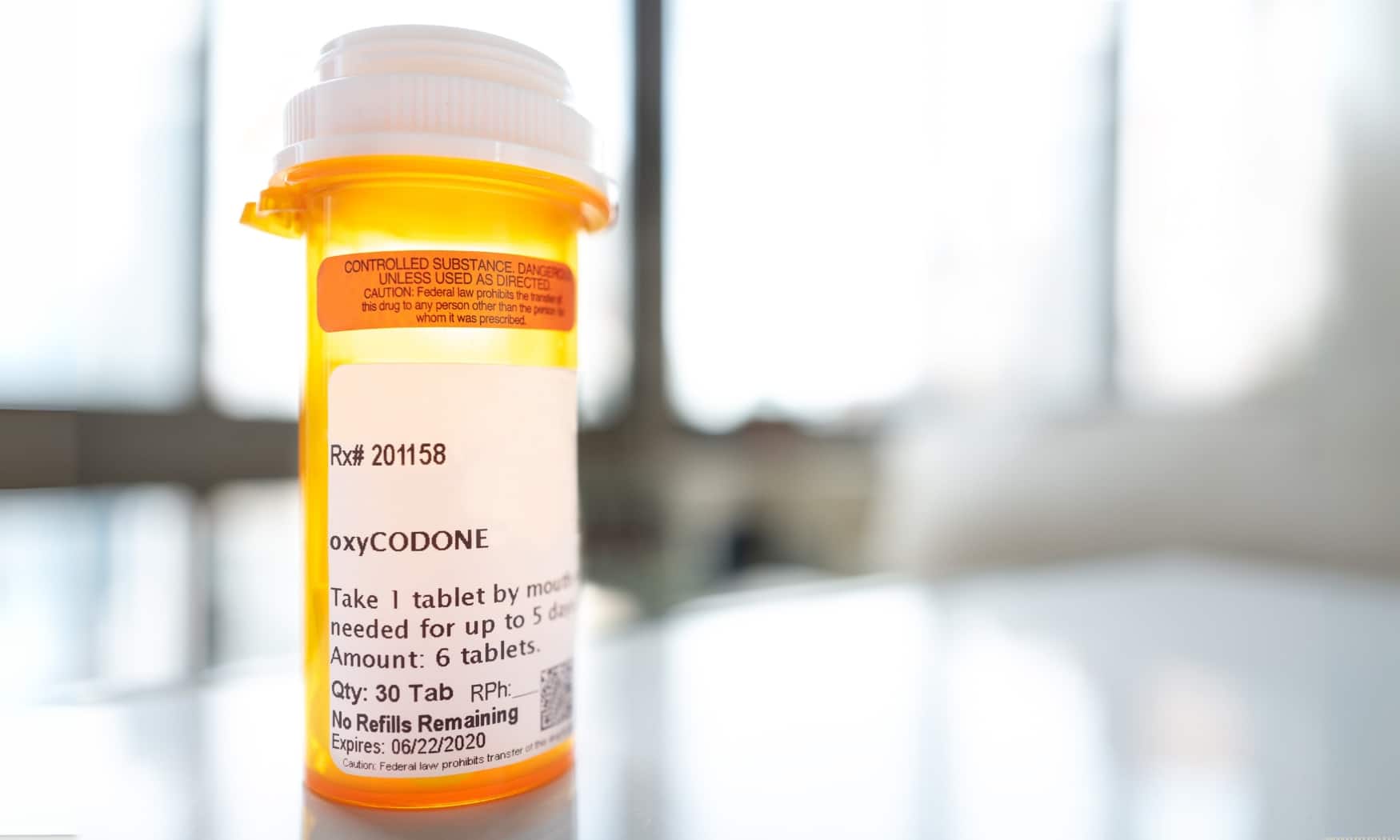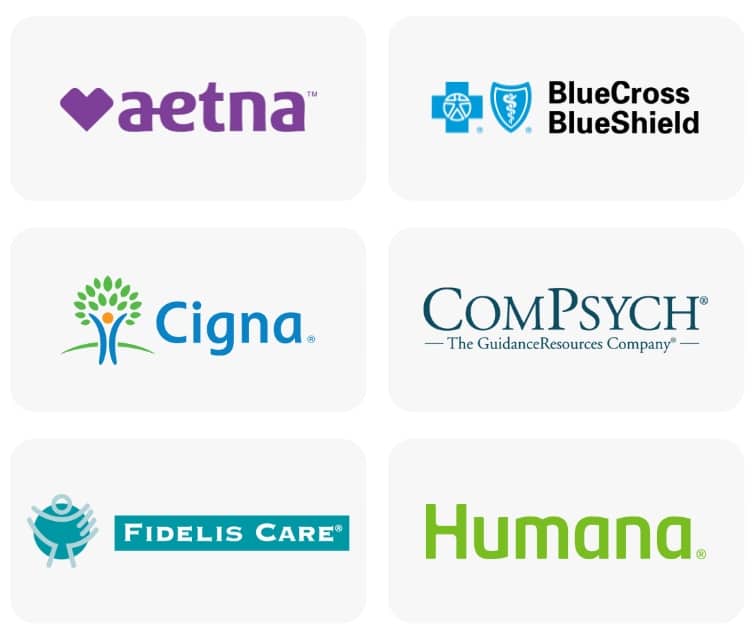Skip To Section
Oxycodone might be one of the most infamous drugs in American history. While it was originally intended to be prescribed in cases of severe and breakthrough pain, it has destroyed many lives. Learn more facts about oxycodone abuse, its role in the opioid epidemic, and what to do if you or a loved one is struggling with oxycodone addiction.

The Deadly History of Oxycodone Abuse
Oxycodone was first created in 1916 by German scientists as an alternative to morphine. However, it wasn’t until the late 1990s that it gained widespread use in the United States. At the time, pharmaceutical companies marketed oxycodone as a less addictive and safer option for treating pain.
Its manufacturer, Stamford-based Purdue Pharma, misled medical professionals and the public, framing the drug as safe. Unfortunately, this led to a dramatic increase in prescribing rates and availability of the drug. Combined with aggressive marketing tactics and a lack of proper oversight, oxycodone became easily accessible to those seeking relief from chronic pain.
This led many people down the path of oxycodone abuse, dependence, and addiction simply by taking the medication as prescribed. It was also co-opted by the black market, which has made the medication synonymous with the opioid epidemic that has caused thousands of overdoses across the country, many of them fatal.
Purdue Pharma’s Legal Troubles
In September 2019, Purdue Pharma filed for bankruptcy in a New York court — the result of a tentative settlement with dozens of state and local governments, as well as thousands of other entities. They all held the manufacturer responsible for widespread oxycodone abuse and opioid-related deaths in their jurisdictions.
Purdue Pharma’s bankruptcy did not come as a surprise, but what remains controversial is that many of the attorneys general who filed suits balked at the $12 billion settlement, saying that it is not nearly enough to address the decades’ worth of damage done by the company’s aggressive and deceptive OxyContin marketing.
Purdue Pharma itself is not out of the woods. Even as the settlement is being finalized, the manufacturer is spending millions of dollars on legal costs in myriad lawsuits from across the country. Its battles will continue to range in bankruptcy court.
The Sackler family, who became one of the richest families in America through their now-relinquished ownership of the company, is facing litigation themselves. The $12 billion settlement includes $3 billion from the family, but this has not satisfied the plaintiffs, who point out that its terms spare Purdue Pharma from being held legally liable for the opioid epidemic by a judge.
The chairman of the company clarified in the bankruptcy settlement that Purdue Pharma has no intention of admitting to any culpability. Members of the Sackler family continue to reject the accusations that their company had any role in the proliferation of the spread of opioids.
The Current Status of Oxycodone
Generic oxycodone remains available to be prescribed by doctors. There are still numerous instances of prescriptions and shipments being diverted by black market operators in illegal distribution operations. There are also countless troubling stories of oxycodone being cut with other, deadlier opioids (like fentanyl) and being sold to unsuspecting buyers.
Oxycodone remains a medication that is used for legitimate medical purposes, but it has become inextricably linked with the shadow of the opioid crisis.
Oxycodone is available under a number of brand names. It is often combined with another medication, such as acetaminophen, ibuprofen, or aspirin. Brand names of oxycodone and combination medications include the following:
- OxyContin
- Percodan
- Percocet
- Roxicet
- Endodan
- Oxaydo
- Roxiprin
Is Oxycodone Still Available?
Oxycodone is still available, but prescribing it and legally obtaining it are very different processes. For example, before it filed for bankruptcy, Purdue Pharma stated that it would stop marketing the medication to doctors in the United States.
As much as the move was in response to the overwhelming negative publicity the company received for its role in the opioid crisis, Bloomberg pointed out that OxyContin has simply become less profitable. In 2012, the medication generated $2.8 billion in sales for Purdue Pharma. In 2017, sales were down a full $1 billion, and signs suggest that the slide will continue.
If Prescription Opioids Are Dangerous, Why Are They Still Available?
Prescription opioids remain available but are increasingly difficult to access, sparking controversy among patients and practitioners. The Washington Post describes a “sweeping change in chronic pain management,” as doctors grow hesitant to prescribe opioids, fearing addiction risks or malpractice lawsuits. Patients, however, oppose having their doses reduced or stopped, especially when opioids are their only relief from chronic or breakthrough pain.
The tension lies between medical professionals, who are acutely aware of 70,000 annual opioid-related deaths (and countless overdoses), and patients who feel unfairly stigmatized and frustrated as opioids remain their only effective pain management option.
As a result, opioids are less accessible. Many pain clinics have closed, either due to reduced supply or involvement in smuggling rings and criminal investigations. While some patients see their doses reduced, others lose access altogether, forcing them to travel far for prescriptions or turn to black market sources.
Currently, 33 states have legal limits on opioid prescriptions, and Medicare Part D imposes similar restrictions for some patients. The Department of Veterans Affairs has also cut the number of patients receiving opioids. Between 2016 and 2018, under DEA direction, opioid production by pharmaceutical companies dropped by 38%.
How Addictive Is Oxycodone?
Oxycodone’s powerful addictiveness is because human brains seek and receive pleasure, stimulation, and reward. Much of this neural wiring comes from the opioid system in the brain and the central nervous system.
The director of the Center for Substance Abuse Research at Temple University explained that opioids act in ways similar to other drugs. Opioids bring powerfully pleasant experiences by unlocking the dopamine transmitters in the brain that make us feel good.
But what sets opioids like oxycodone apart is how they target the amygdala, the region of the brain from which the electrochemical signals of emotions and motivation are born. This is what makes the craving for oxycodone abuse so strong.
Chronic oxycodone abuse leads to changes in the brain’s structure, removing special connections between neurons and forcing the brain to rely on the opioid compounds to do the work of thought, emotion, and critical thinking.
As the addiction progresses, the brain’s reward system struggles with irresistible cravings, which in turn influence behavior. The smallest triggers can jumpstart the need for more opioids. The biggest triggers make the desire for opioids unbearable.
The final piece of the puzzle that makes oxycodone so addictive is that, after long-term exposure, the brain cannot function without it. Therefore, taking oxycodone away results in excruciating withdrawal symptoms that make a person even more dependent on the medication just to feel normal.
What Are the Risks of Oxycodone Abuse?
One of the significant health concerns of the abuse of oxycodone is that the brain adjusts to the constant presence of its chemical compounds in the central nervous system.
Whether the oxycodone use was for legitimate medical reasons that got out of hand or for recreational purposes, the body becomes increasingly dependent on oxycodone for feelings of pain management and comfort. Eventually, people lose the ability to function properly without it. As time goes on, people also build a tolerance. This occurs when a person requires increasing amounts of a drug to experience the original effects. As the need for oxycodone continues, the health effects also pile up.
Oxycodone abuse, or taking oxycodone beyond prescribed parameters, will often lead to:
- Constant fatigue
- Inability to concentrate
- Periods of depression and anxiety
- Pinpoint pupils
- Drastic changes in behavior (usually a loss of interest in activities, family, work, or school)
- A refusal to stop taking oxycodone or an inability to stop
Any signs like these are grounds for concern that the person’s use has crossed the line into oxycodone abuse.
How To Hold An Intervention for Oxycodone Abuse?
If a person refuses to seek help for their oxycodone addiction, it may be necessary to stage an intervention. This is a properly planned and carried out group meeting between the patient, their close friends and family, and a trained moderator or professional interventionist to convince the patient that they have a problem with oxycodone abuse. They will also stress the importance of enrolling in a treatment program immediately.
The people in the intervention will present their reasons why their loved one needs help. This will usually entail listing the damage and changes caused by oxycodone abuse. The intervention is not a space to shame the person, but to provide an opportunity for them to take action by starting the recovery process.
However, the intervention should also make clear that if the person refuses help, they will be subject to consequences, such as:
- Divorce or separation
- Eviction
- Termination of custody
- Loss of financial support
- Loss of employment
If you struggle to come up with consequences for your loved one, an interventionist can help you determine them before the intervention.
When done properly and successfully, the person accepts the need for help for their oxycodone problem. They then begin working with the moderator and their friends and family on how to immediately connect with a treatment center.
Interventions can be very emotional and contentious experiences. For this reason, it is best to perform them under the presence and supervision of a trained, licensed moderator.
"*" indicates required fields
Fill out the form below and one of our admissions team members will reach out to you:
"*" indicates required fields
How To Treat Oxycodone Abuse?
To successfully treat oxycodone abuse, a comprehensive care plan is necessary. This should include both medical and psychological treatment to address the physical and emotional aspects of addiction. For this reason, oxycodone addiction treatment includes:
- Oxycodone detox
- Medication-assisted treatment
- Ongoing care
- Therapy
- Aftercare
Medical Detox
The first step of treatment at a facility is detox, which is where the patient weans off their physical need for opioids. This can be a complex, painful, and potentially dangerous process, and it should never occur without medical oversight.
Especially in cases of chronic oxycodone addiction, simply terminating oxycodone consumption can be extremely distressing (physically and psychologically), and it can lead to numerous health complications. As a result, do not attempt to stop taking opioids cold turkey on your own. Consult a medical professional before stopping use.
Medication-Assisted Treatment
During medical detox, medical staff at a treatment facility will administer medications to ease the process. Sometimes, doctors prescribe mild, slow-acting opioids to act as a buffer against the painful withdrawal symptoms that come with discontinuation while still giving the central nervous system the opioids it needs to stay comfortable (albeit at a lower dose). Also known as medication-assisted treatment, these programs use FDA-approved medications, such as Methadone or buprenorphine, to help taper people off opioids.
Without MAT, it takes a little more than a week to break the physical dependence on opioids. The discomforts of oxycodone withdrawal often result in relapse, which is why seeking professional treatment is so important. The exact timeline depends on the nature of the oxycodone abuse, as well as if the patient has been taking other drugs, their history of substance abuse, and if there are any other prevailing health issues.
Ongoing Care
People struggling with oxycodone abuse can also benefit from a comprehensive rehab program that transitions them through each level of care.
After detox, the levels of care include:
- Inpatient treatment
- Partial hospitalization
- Intensive outpatient
- Traditional outpatient treatment
By receiving ongoing care, people can receive continuous support and guidance from professionals and peers to reduce the risk of relapse.
Therapy
Once detox is complete, the next step of treatment is psychological counseling. This will address the mental health damage caused by the oxycodone abuse, as well as teach the patient how they can mentally cope and function without the powerful (and constant) presence of opioids.
Part of this work is to connect with other people in recovery, to learn from their experiences, and to embark on the road to recovery together. Doing this group work, and making family and friends part of the process helps patients understand that they are not alone, and that they have support they can turn to when sober life becomes challenging.
Aftercare
Even after detox and treatment for oxycodone abuse, it’s important to stay connected to the addiction recovery community. This can help to prevent backsliding or relapse. In the long term, this can entail joining a group like Narcotics Anonymous, or one of the dozens of groups based on the 12-step model, that helps patients navigate the complications of being in recovery and being unable to use oxycodone for pain management or recreational purposes.
Aftercare can be lifelong, always providing people with a core group of advocates and friends who can be there in times of struggle and loneliness. This offering of strength and solidarity can go a long way in helping patients enjoy a full and rich life in recovery.
Get Help For Oxycodone Abuse
If you or a loved one is grappling with oxycodone abuse and addiction, remember that hope and help are within reach. Taking the first step towards recovery can be daunting, but it’s also the most crucial move towards reclaiming your life. Our compassionate team of professionals is here to guide you through every stage of the journey, offering personalized treatment plans designed to meet your specific needs. Don’t let addiction control another day of your life. Reach out now for a confidential consultation and start on the path to a healthier, happier future.
- How opioids reshape your brain, and what scientists are learning about addiction
- How does the opioid system control pain, reward and addictive behavior? | ScienceDaily
- Tennessee-Based Pain Management Group To Close Clinics Amid Financial Turmoil – KFF Health News
- Opioid Crackdown Forces Pain Patients To Taper Off Drugs They Say They Need – Washington Post
- Pain Pill Giant Purdue to Stop Promotion of Opioids to Doctors – Bloomberg
- OxyContin: On the Way Out?
- Feds warn about possibly tainted pills in Bellingham
- Virginia doctor who illegally prescribed 500,000 opioid pills sentenced to 40 years in prison | CNN
- Exclusive: David Sackler Pleads His Case on the Opioid Epidemic | Vanity Fair
- Purdue Pharma, Accused Of Fueling Opioid Crisis, Files For Chapter 11 Bankruptcy: NPR
- Sacklers Said to Back $11.5 Billion Purdue Opioid Settlement – Bloomberg
- Tolerance to Opioid Pain Medications
- Intervention: Help a loved one overcome addiction – Mayo Clinic
- Preferences for Aftercare Among Persons Seeking Short-term Opioid Detoxification – PMC
- Group Therapy for Substance Use Disorders
- Prescription drug abuse – Diagnosis and treatment – Mayo Clinic
Our admissions team is available 24/7 to listen to your story and help you get started with the next steps.


